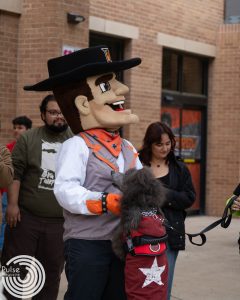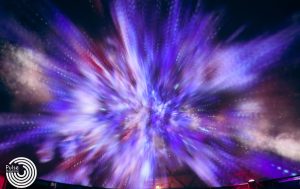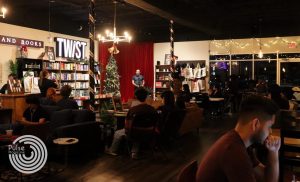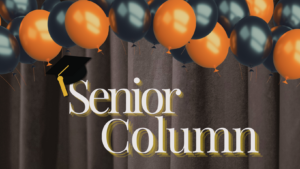Borderlands – Cuando Vives En La Frontera
By Andrea Maldonado
UTRGV’s student community is 90% Latinx. Many students cross the border every day to attend classes. Others are first-generation students whose Hispanic heritage bleeds into their everyday lives.
We live in la frontera, or the borderlands, as often depicted by Chicana activist Gloria Anzaldúa. Within this context, our university has a unique position and responsibility to represent Mexican American students in education.
Faculty and students can engage with their Hispanic culture and communities through academic programs like the Mexican American Studies Program (MAS) and the Center of Mexican American Studies (CMAS). These programs are funded to honor and adhere to the university’s mission to create a bicultural and bilateral space where students can celebrate their heritage.
The Mexican American Studies Program
Cathryn Merla-Watson, interim MAS undergraduate and Graduate Program Coordinator, said the university system, historically, has not met the needs of poor and working-class students.
“The university system that has been historically created for and by heterosexual white men, who are of a certain class position, obviously doesn’t speak to and draw upon the [rich] experiences of our students,” Merla-Watson said.
According to her, numerous studies have shown that when the curriculum reflects students’ culture and lived experiences they tend to succeed.
MAS speaks to this historical gap that has been created in education because Latinx stories have been systematically erased for so long. MAS and CMAS’ mission is to not only broaden Mexican American students’ understanding of their culture, but to fill that gap in higher education where everyone can engage in discussion about Latinx heritage, stories and experiences.
MAS courses provide an interdisciplinary approach to understanding Mexican American and Latinx culture. According to Coordinator Merla-Watson, these courses teach students about their cultural needs and values so they can become active advocates for their communities. The program also equips students to go into a diverse array of jobs, from teaching to advocacy.
Living in la frontera fosters a dual identity in our student community. The ongoing discussion of identifying with Hispanic or Anglo culture challenges the perception of how we see ourselves.
“One of the things that is sort of enlightening, and I think liberating for students, is to read,” Merla-Watson said. “For example, the work of Gloria Anzaldúa and other authors who talk about how it is not either or, but rather see the borderlands as a space that cultivates these kinds of hybrid identities. … You can be both Mexican and American. You can see all of your various identities create a new identity that is constantly evolving. It is important because it gives us a sense of belonging.”
Gloria Anzaldúa, in her book “Borderlands/La Frontera: The New Mestiza,” said what it means to live in the borderlands:
“To survive the Borderlands you must live sin fronteras be a crossroads.”
This emphasizes that Mexican Americans shouldn’t feel the need to choose between Hispanic or Anglo culture as their identity. To celebrate their community means to be a combination of both; a crossroad that joins both cultures.
The Center of Mexican American Studies
George Diaz, CMAS Director, said he reflects on this divided identity, not as a battling concept, but as a complex issue. Even though we might all have a different perception of being Chicanx or Latinx, we are all proud of where we come from and share a common interest to celebrate our culture.
CMAS provides students with a place to celebrate their Latinx heritage. Diaz said the purpose is fulfilling programming and events regarding Latinx and Hispanic heritage. This provides students the opportunity to form friendships and engage in conversations of what they learn in the classroom.
“It’s kind of [like] when you see a movie. You talk about it, and then you realize why you liked it,” Diaz said. “I think we learn a lot by talking about it rather than [by] being told something. So, if you are in class and hear a lecture, that is one thing, but CMAS provides students opportunities like events or conferences for people from similar backgrounds to get together and talk about their shared experiences.”
Celebrating Hispanic heritage involves not only talking about current experiences and issues, but also honoring the generations before us. Latinx communities have the means to showcase their rich stories and experiences, unlike their parents or grandparents who were silenced and whose stories were systematically erased.
Philosophy sophomore Marleen Salazar said Anzaldúa showed her that her life experiences are very different from the generations before her.
“Reading about how it is very customary for everybody, especially women, to stay silent … ,” Salazar said. “I am a new generation; A new era of what my family has experienced.”
Encouraging discussion about Latinx heritage and funding these programs allows students to not only feel represented in their education but proudly become active members of their communities.
“We are a Hispanic Serving Institution, and we are based here in the RGV,” Salazar said. “I don’t think there is anybody here that is ashamed of being from the 956. There are a lot of people who are super proud, and I am proud too. Funding programs like the Mexican American Studies Program UTRGV has for its students is helping to grow our communities stronger.”





